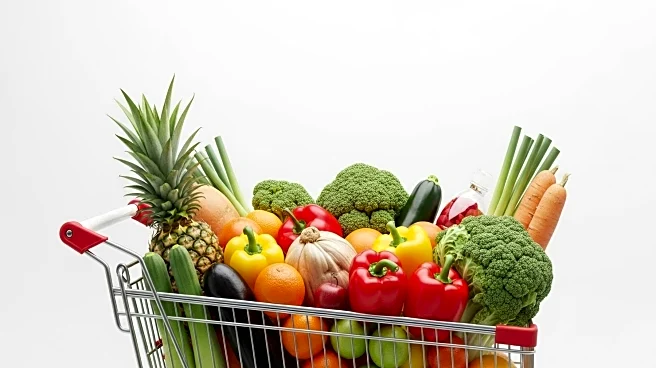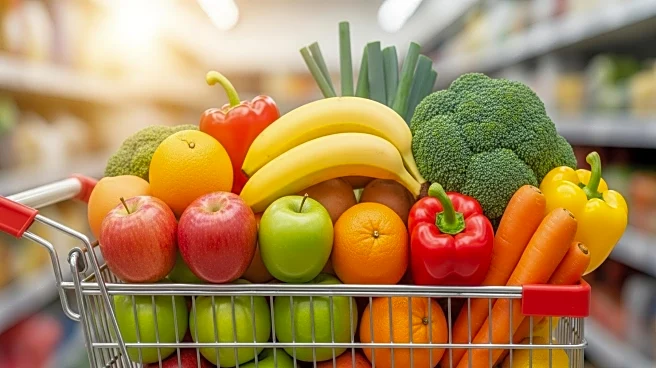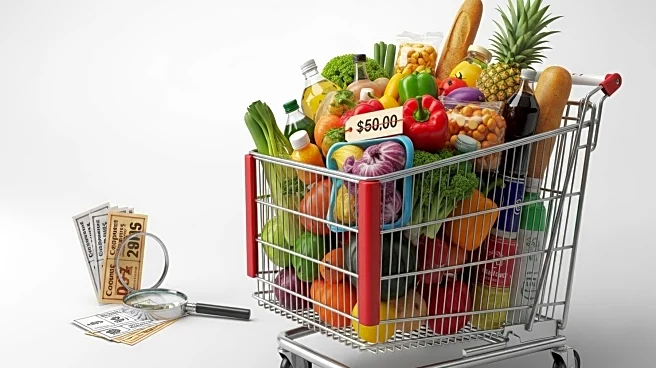What's Happening?
Food prices in the United States have risen by 24% from 2020 to 2024, according to the USDA's Economic Research Service. This increase is attributed to factors such as inflation, tariffs, and extreme weather conditions. Coffee prices have seen a particularly sharp rise, surging 45% year over year in August. Consumer Reports experts, including nutritionist Amy Keating, have provided strategies for consumers to manage these rising costs. Recommendations include shopping with a plan, opting for generic or store-brand products, and considering meatless meals to save money. These strategies can help consumers save between 30% to 70% on staples like orange juice, coffee, cheese, and yogurt.
Why It's Important?
The significant rise in food prices affects a large portion of the American population, with 77% of Americans reporting a noticeable increase in grocery costs. This trend has implications for household budgets, particularly for low-income families who may struggle to afford basic necessities. The advice from Consumer Reports is crucial as it offers practical solutions to mitigate the impact of these price hikes. By adopting these strategies, consumers can potentially reduce their grocery bills and manage their finances more effectively. Additionally, the rising food prices may influence broader economic policies and discussions around inflation and consumer protection.
What's Next?
Consumers are encouraged to join local store loyalty programs for additional discounts and to store groceries properly to extend their shelf life. For those in need, resources such as food banks and the Supplemental Nutrition Assistance Program (SNAP) are available to provide support. As food prices continue to rise, it is likely that more consumers will seek out these resources and adopt cost-saving measures. Policymakers may also face increased pressure to address the underlying causes of food price inflation and to provide relief to affected families.
Beyond the Headlines
The ongoing increase in food prices may lead to long-term shifts in consumer behavior, such as a greater reliance on store-brand products and a move towards more sustainable and cost-effective dietary choices. This could also spur innovation in the food industry as companies seek to offer affordable alternatives to meet consumer demand. Additionally, the economic strain caused by rising food prices may prompt discussions on the need for more robust social safety nets and economic policies that address inflation and its impact on everyday Americans.











